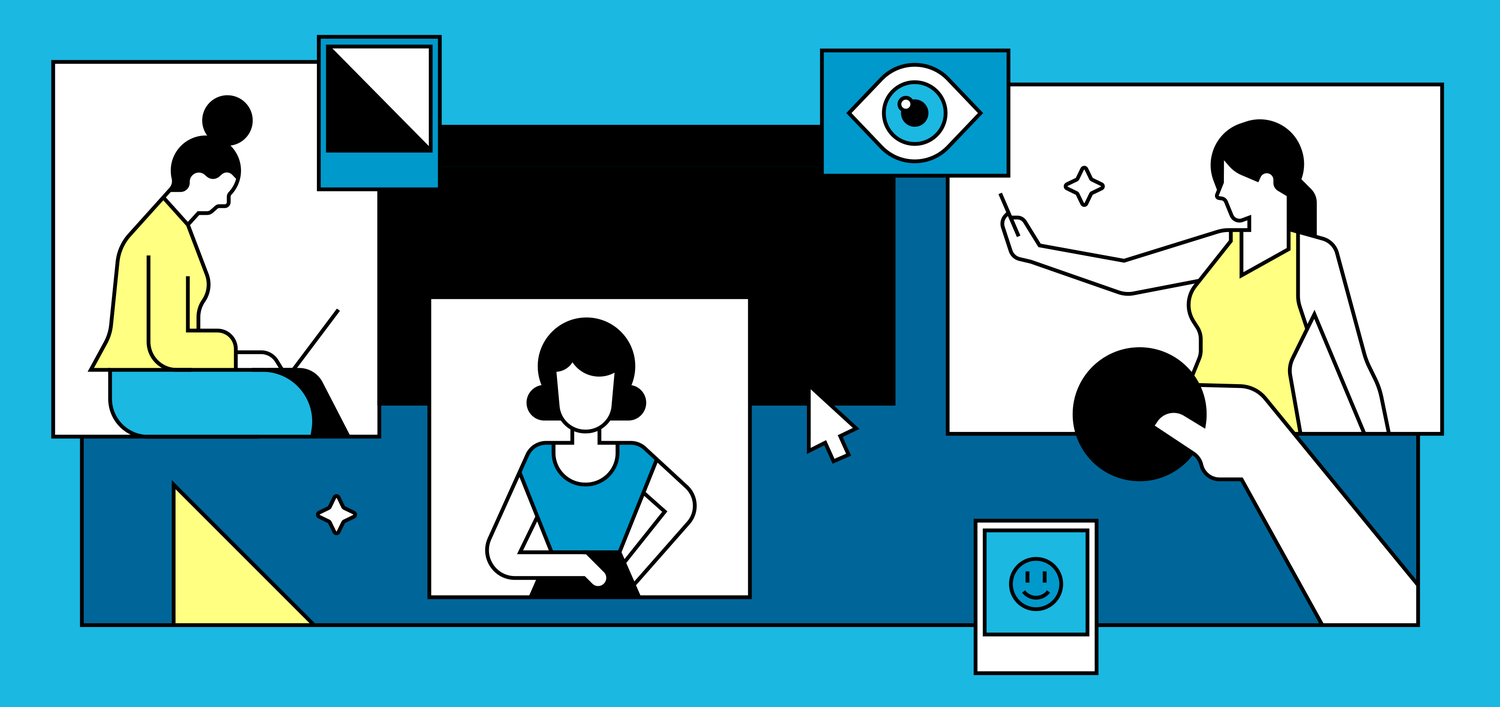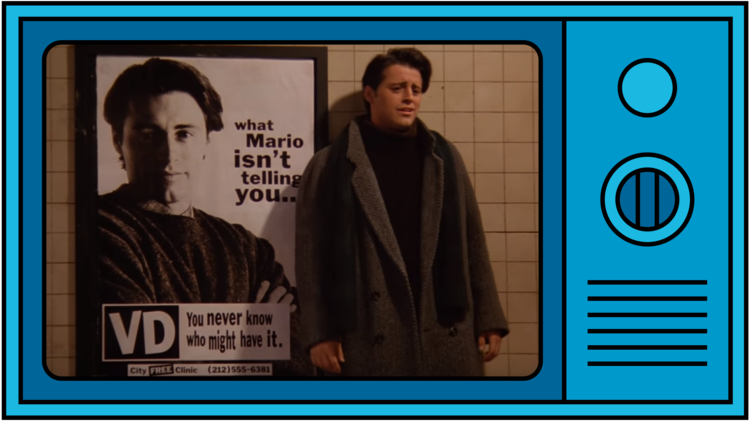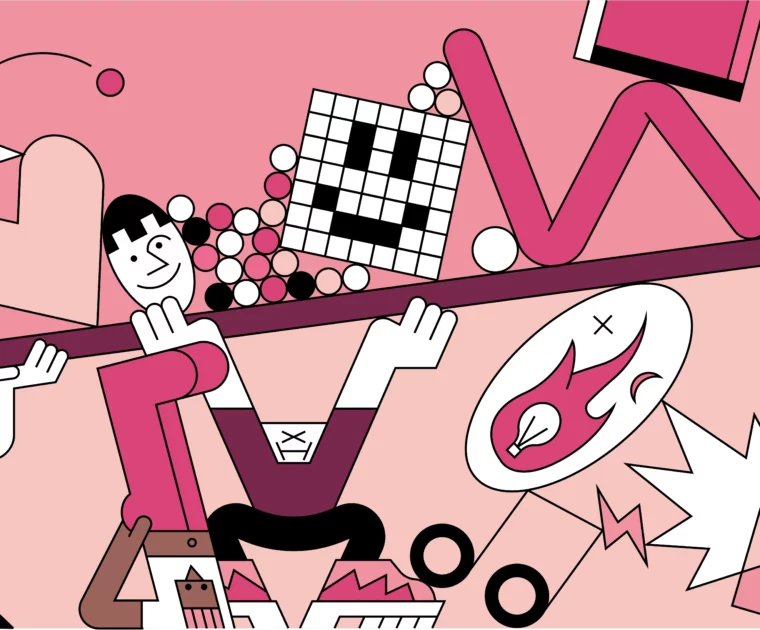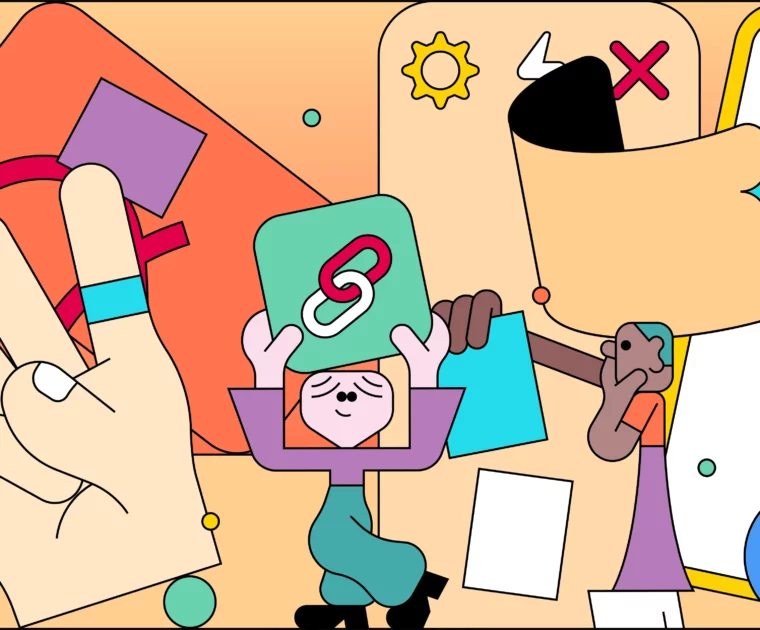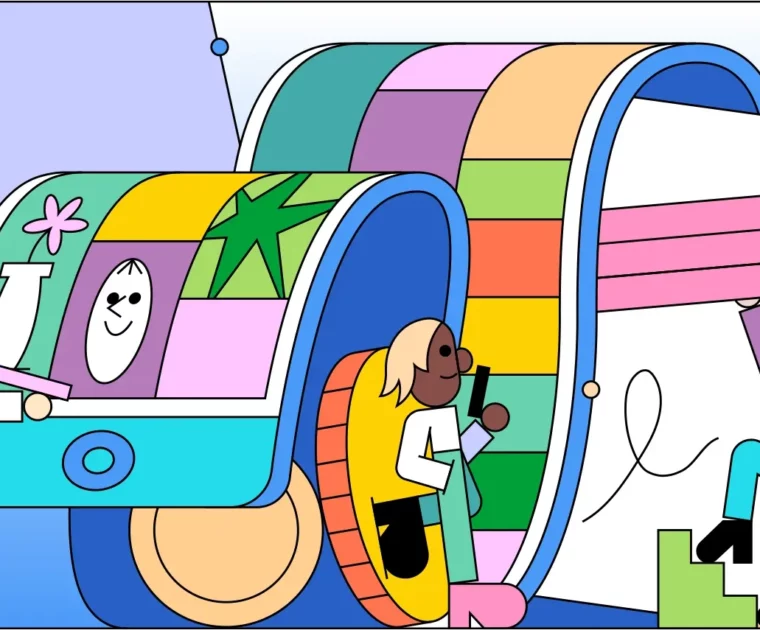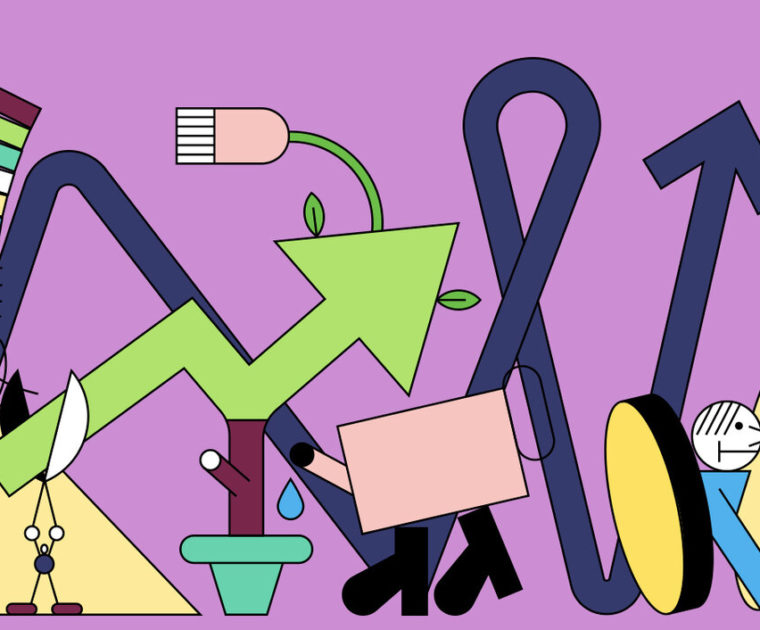How to Keep the Rights to the Content You Pay Influencers to Create for You
In the wonderful world of social media, user-generated content is a valuable resource for marketers. It helps address content production gaps, it increases follower engagement, and it’s an effective method of word-of-mouth marketing.
But with the multiplication of user-generated content on social media, there also come a barrage of questions about who owns the content, especially in the world of influencer marketing, where UGC is every creator’s bread and butter.
The truth is brands should NEVER be in a position where they have to FIGURE OUT who owns the rights to their sponsored content (even though they often are).
This is super important.
Content rights determine who has the legal right (the brand or the creator) to use and share the content a bloggers, influencer, or social media user creates. This is true even if a brand has paid a creator for the content and it features a brand’s products or services. A brand’s UGC rights still have to be established IN WRITING because in the U.S., copyright are automatically assigned to the content’s creator.
So, in this post, we’re discussing what you as a marketer need to know about the UGC rights, the challenges brands face with UGC campaigns, and tips for structuring content rights for your next UGC or influencer campaign.
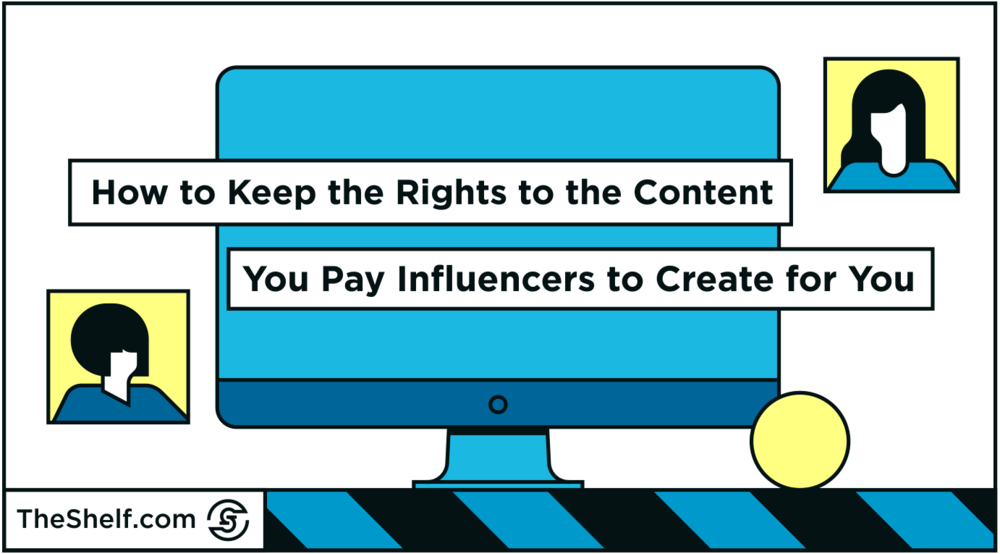
The 411 on UGC
So, we’ve talked about UGC quite a bit over the years in different respects….
…. how to drive sales with UGC
…. how to get AMAZING UGC (cause all UGC ain’t amazing)
…. the 5 BIG benefits of UGC (and why brands clamor for UGC)
If you missed our prior memos, we’ll make this explanation short and sweet – user-generated content is the lifeblood of social media and influencer marketing. It’s the content created by contributors (whether solicited or unsolicited, paid or unpaid by the brand) and made accessible to the general public via social media. It includes both sponsored posts AND the stuff users post to their social media feeds about different brands – images, captions, videos, blogs.
At The Shelf, A LOT (like, MOST) of our clients are expecting great UGC from their influencer campaigns. Some brands run campaigns almost exclusively for the UGC.
In general, UGC is a good way for brands to get consumers involved in the content-creation process. It gives customers a chance to share honest feedback on the products. Plus, it creates a TON of content (some of it even great content) for brands to reuse across their own branded social channels (with permission, of course).
Not for nothing, but this form of content creation and word-of-mouth marketing is super effective. That’s the beauty of UGC.
Okay, So Let’s Take a Look at a Few Brands That Are Really Good At the [Free] UGC Game
You know we had to do it because we love examples, and color, and screengrabs that prove our point. So, we put together a quick-and-dirty list of some brands (our go-to UGC examples, no doubt) who are successfully integrating UGC as part of their normal content marketing strategy.
COCA-COLA
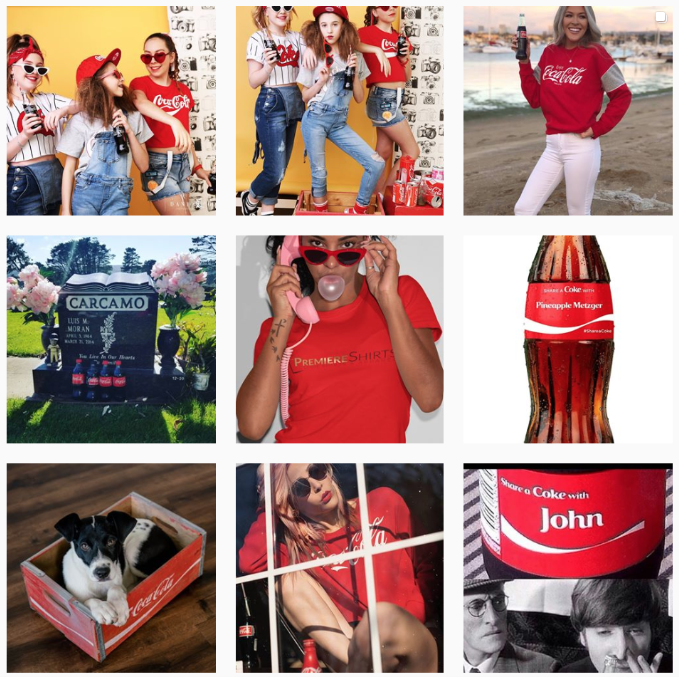
This legacy company kills it at creating user-generated content with their “Share a Coke” campaign. Coca-Cola first launched the “Share a Coke” campaign in the summer of 2014.
The campaign originally involved users posting about finding their names on bottles of Coca-Cola, and it worked famously well. Who wouldn’t want to share a personalized Coke? It makes us feel special and happy almost instantly.
The campaign has since evolved around the idea that when customers #ShareACoke, they’re sharing an experience with the people around them. You can go online and buy personalized Coke bottles, so none of your friends ever feel left out of the picture.
Running every summer in the years since its launch, the Share a Coke campaign is now a memorable marker for Coke drinkers around the world. “Once the campaign ends, people want to hold onto the memory,” says Jaideep Kibe, vice president, Coca-Cola Trademark, Coca-Cola North America.
AERIE
Aerie is an intimates brand connected with the larger retailer American Eagle. In the mid-2010s, public scrutiny around photo-retouching of women increased. Aerie made a name for itself by pledging to stop retouching the models in their product photo shoots.
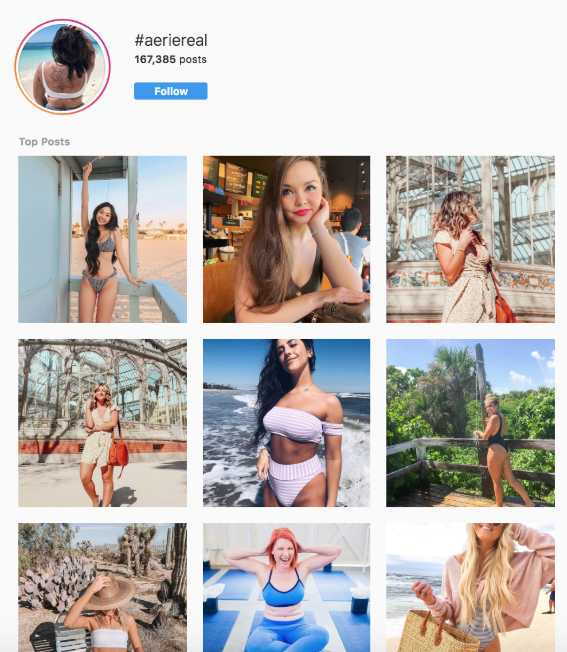
On top of eliminating retouching, Aerie began the branded hashtag campaign #AerieReal. Aerie asked that women post un-edited photos of themselves in bathing suits using the hashtag #AerieReal, and in return they donated $1 to the National Eating Disorders Association for every photo posted.
Aerie tapped into the very real emotions of women around the world to not only highlight their swimsuits on real “models,” but also spark a change in the online fashion industry.
WAYFAIR
Wayfair is an online dropshipper that has become a staple of all things home décor. Much of Wayfair’s legend can be attributed to social media and UGC. Wayfair encourages customers to share photos on Instagram of their products in the customer’s home using the hashtag #wayfairathome, or in our case, #wayfairprofessional.
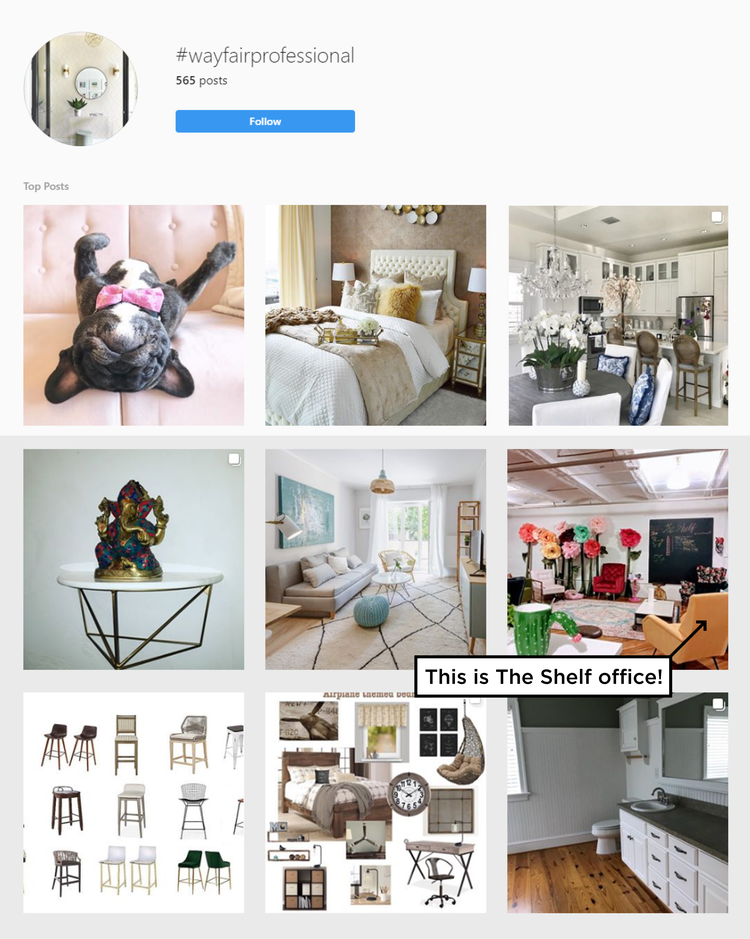
For brands like Wayfair, allowing users to showcase interior design chops in its feed provides Wayfair with several powerful benefits.
First… It gives Wayfair access to a never-ending source of really great social media fodder. People who love Wayfair LOVE it, and they are more than willing to share the results of their deocrating projects with Wayfair’s massive audience.
Next… The UGC is a powerful method of social proof. It’s a great way for the brand to feature how its décor items can fit into any home or office décor style WITHOUT looking like a sponsored post.
Plus… Wayfair’s feed doubles as a sort of home decorating “look book” that people will follow and access as needed for design inspiration.
It’s win-win-win.
The Challenges with UGC Rights Brands MUST Address
Remember that one guy who said he fought the law and the law won? Assume that’s gonna happen if your UGC ducks aren’t in a row.
CREATORS OWN THE RIGHTS… ACCEPT THAT
We published a post not too long ago on the three social media laws brands and marketers need to know to do business in the influencer marketing space. You can read that post here.
Here’s the thing – with something like UGC, your brand is dealing with the creative output of another person or organization. By default, the U.S. Copyright Law grants ownership of any intellectual property to the content’s Creator – this is true EVEN IF YOU PAID FOR THE CONTENT!
For UGC (and any copyright issue), ownership rights MUST be transferred from the Creator to the brand in writing. At the very least, there should be something in place to outline how content rights will be shared between the Creator and the brand.
Creators like bloggers, foodies, photographers, and videographers (not an exhaustive list) want credit for what they create, and they should get it. A lot of brands understand intellectual property laws, but don’t readily equate social media content with intellectual property.
It is.
Here’s the takeaway that most of us learned as children: Ask for permission before you mess with anyone else’s stuff.
GETTING CONSENT FOR UNSPONSORED UGC
Into the nitty-gritty for a second. Bare with us — you’ll appreciate it when you know how to get consent from your audience and avoid the possibility of a crazy lawsuit.
There are a few ways to go about getting consent. Let’s be real — nobody has the time and resources to reach out to EVERY individual whose content you want to use.
There are two types of consent brands can get before utilizing user-generated content:
- Implied Consent
- Explicit Consent
EXPLICIT CONSENT
Explicit consent means the Creator explicitly gives you permission to use their content. For influencer marketing, the details of how content can be used is included in a contract.
For unsolicited, unpaid UGC, brands will often DM a Creator and just ask if it’s okay to use X piece of content for Y specific purpose.
Operative term there being specific purpose.
According to industry analyst Susan Etlinger, “Organizations must be honest with the user about when and how the content will be used, and whether it will be syndicated to other publishers or organizations.”
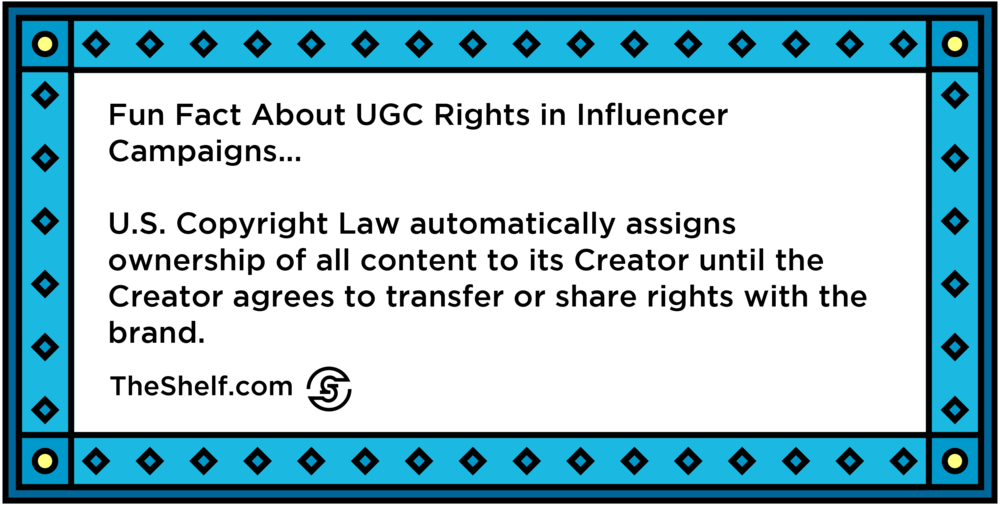
The copyright (which legally gives someone the right to publish, copy, edit/modify, sell, make derivative works from) belongs to the person who created the content. If you seek out their content and intend to use it, you better be clear about what you want to do with it and get permission first.
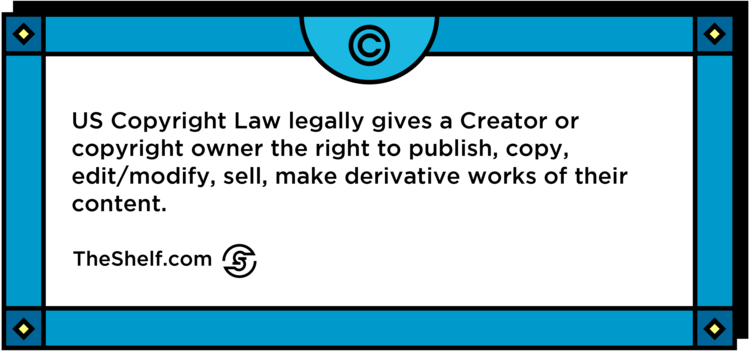
IMPLIED CONSENT (HASHTAGS and @MENTIONS)
On the flip side, brands can obtain implied consent. Implied consent is good for brands that want to compile a huge library of UGC since you don’t have to reach out to individual content creators to ask for their permission. Score!
Implied consent is the type of consent associated with social media and things like hashtag campaigns and contests. It’s the notion that, by using a branded hashtag or tagging (not just talking about) a specific brand, a user is agreeing to the brand’s use of their related content.
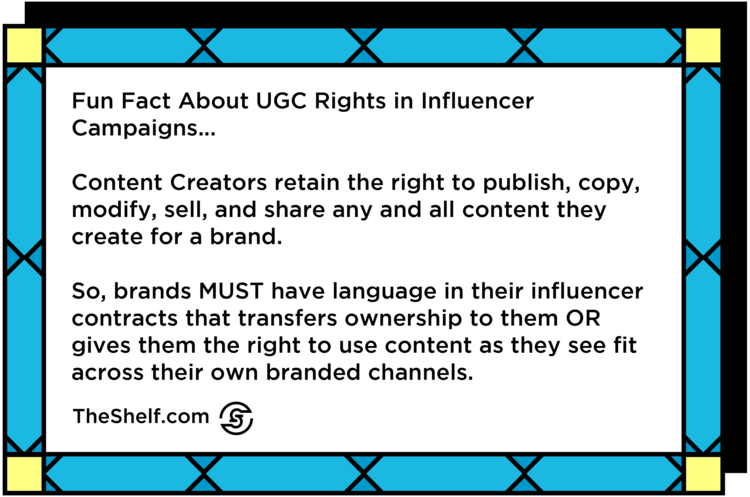
You know what I’m talking about. I bet you see branded hashtags contests and campaigns on your own Instagram feed almost daily. These types of user-generated content campaigns are everywhere and they are GREAT at creating awareness around a product, brand, campaign, or idea.
If you decide to run a branded hashtag campaign on Instagram (as thousands of other brands do), you’re assuming that a consumer is implying their consent to the use of their content by using the hashtag needed to enter and sharing campaign-related content with their own networks.
Branded hashtags are HUGE for brands. Most of the hashtags used on Instagram (like 70 percent of them) are branded hashtags. Instagram posts with hashtags get 12.6 percent more engagement than those without, so many brands incorporate branded hashtags as a core part of the marketing strategy. Often, when we pitch clients, we pitch ideas WITH branded hashtags.
Final thought here… If there is ever a question about who owns the content – and that’s always the case when there’s no contract in place that explicitly lay out who owns what and how content can be used – ask before using someone’s content.
Tips for Structuring UGC Rights Policies for Influencer Campaigns
We know it’s not fun and it sounds pretty boring, but you have to have a UGC rights contract in place for any influencer campaign.
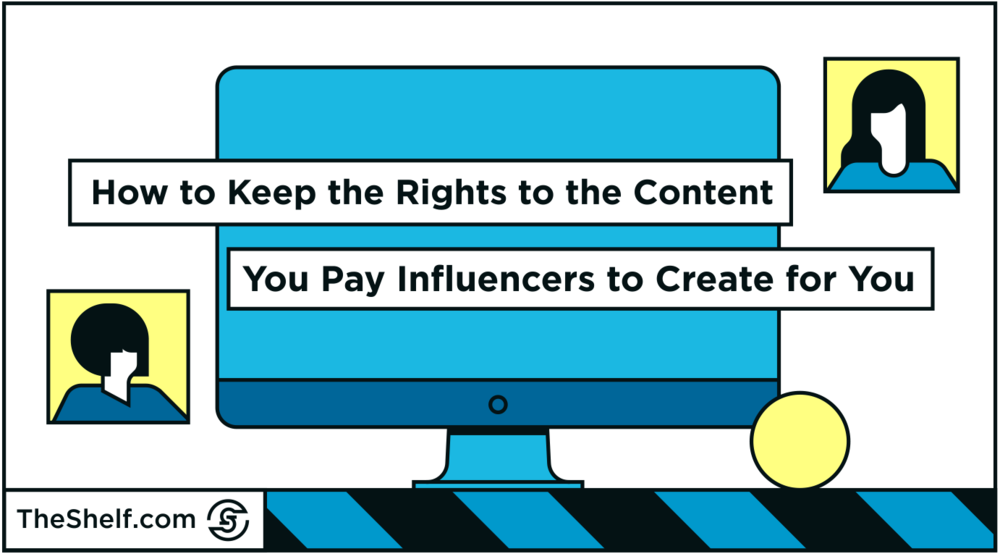
We typically negotiate rights for campaign content to be used by the brand as they see fit, across their social media channels. But the larger the influencer, the more likely you are to have resistance from the Creator. Sometimes that takes the form of an expiration date for the content, or the Creator being able to delete sponsored posts from their feed after a certain amount of time… it can get a little weird and a little complicated.
Still, it’s crucial that you iron out those types of details in a written contract because influencers are well within their rights to ask a brand to take down a post that was part of a sponsored campaign the brand has ALREADY PAID FOR if reuse is not clearly defined within the contract. In an absolute-all-out-worst-case-ever scenario, the influencer could actually sue for copyright infringement.
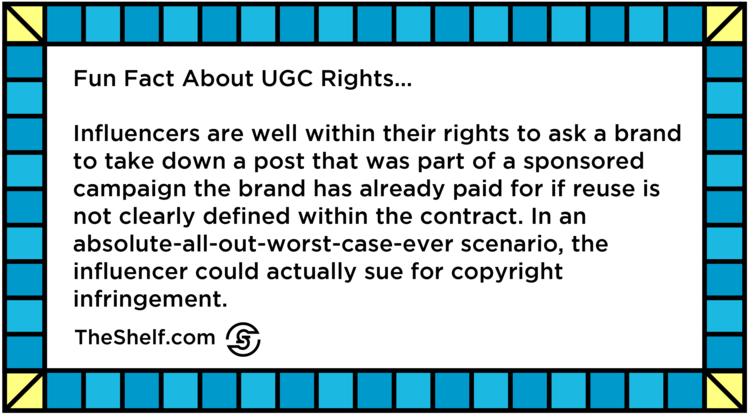
And FYI, if an influencer is repped by an agency, you can bet there are going to be content rights issues. Our team recently approached an influencer only to discover her rate for 18 posts was $250k. PLUS, the brand would have to pay an additional cost of $2,000 PER WEEK for any image it wanted to reuse in ads. #Facts
CLARITY AND TRANSPARENCY ARE CRUCIAL
You ever see that episode of Friends where Joey takes a job as the spokesperson for City Free Clinic and ends up with his face plastered all over New York City (including Time Square) on a poster for VD?
THAT’S an influencer’s worst nightmare when it comes to sharing the rights to content that contains their likenesses. You have to remember Creators are working hard to build their brands just like you are… they want to protect their reputations, their audiences, and their future as influencers.
Source: YouTube.com
Clarity and transparency are KEY in negotiating UGC rights, both for brands and Creators. Creators need to know from brands exactly how sponsored content and other UGC will be used and how long it will be used for that purpose.
CONTRACT ELEMENTS TO INCLUDE
Now, like we mentioned before, the rights (and scope) of use for influencer-created content has to be negotiated in your influencer contract.
Think of influencers as their own companies. They are brands in-and-of themselves. So, influencers are looking to participate in campaigns that align with their brands. That said, the use of the content created during a campaign should also align with the influencer’s brand.
CREATIVE CONTROL
How much control will creators have when it comes to conceptualizing ideas and creating collateral for your campaign?
Is your influencer going to be posting directly to their social media channels or is this more of a takeover type of situation? We actually published a pretty comprehensive piece on takeovers that you can read:
The Shelf platform includes a dashboard that allows brands to preview and approve sponsored content for influencer campaigns before it goes live.
Brands often leave creative control up to the influencer, but it’s also important for brands to set up strategies and the message before hiring influencers for their campaigns (that’s largely because the strategies you use and your message will play an important role in your influencer selection process).
Influencers have mastered the art of reaching THEIR audience, not really yours. So, it’s important that the influencer’s audience and the brand’s audience overlap to some degree.
TAKE DOWN AND REMOVAL RIGHTS
Influencers can be particular about the content they leave on their feeds. If you’ve ever looked at an influencer’s Instagram, you know that they’re selective about how much sponsored content they have on their page. And duh! This makes sense. You don’t want to see sponsored post after sponsored post — it will ruin their authenticity with their audience.
Brands, on the other hand, also need the authority to take down or remove content that doesn’t meet the established brand guidelines. You can’t have bad or misaligned content that you paid for hanging out on the internet.
Include a section in your influencer contract outlining when an influencer can take down sponsored content, and clearly state that you reserve the right to remove any content an influencer produces for your brand.
INFRINGEMENT
It’s important for brands to get enlisted influencers to agree they won’t infringe on any other person’s rights, including copyright. Influencers should not incorporate the pictures, content, audio, or video of another creator’s work into any campaign. That’s uber-important.
DELIVERABLES
To ensure you get what you paid for, we always list a set of DOs and DON’Ts because influencers (bless their hearts) will inevitably do weird things. So, you need a record of the hashtags to be used, any people or things that need to be mentioned in sponsored posts and the length of time the post is to stay published to a creator’s site or social channel.
OTHER CRITICAL ELEMENTS
Contracts also include things like confidentiality clauses that require influencers to keep your super duper top secret secrets a secret… and indemnification that keeps you out of court in the event a zombie apocalypse, Yeti appearance or freak accident happens during the creation of the sponsored content.
Contracts are crucial, and the details you include in your contracts can save you time, reputation, and tens of thousands of dollars in litigation. Our iron-clad contracts allow our clients to have stress-free campaigns…but trust us when we say every clause in our contract was the result of a hard-learned lesson.
Final Thoughts
Content rights are actually pretty straightforward – Creators own the content until they agree that they don’t.
For brands that want to include the use of paid or unpaid user-generated content in their marketing campaigns, you can avoid the headaches that will inevitably arise with UGC rights by getting permission to use the content ahead of time.
Not to toot our own horn here, but we’re pretty good at negotiating content rights for brands, and our platform has a built-in transparency that just makes the whole UGC/ post approval process super simple to navigate.


